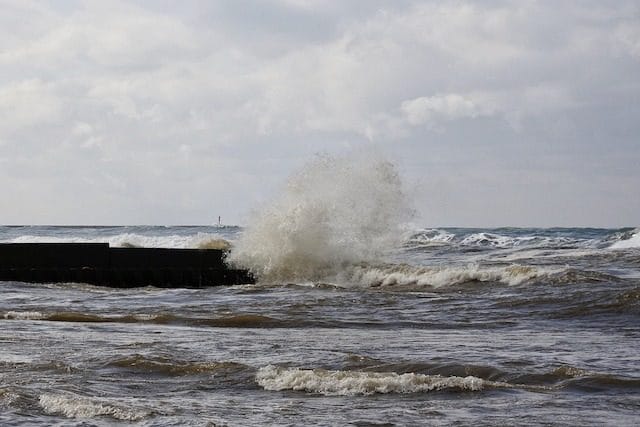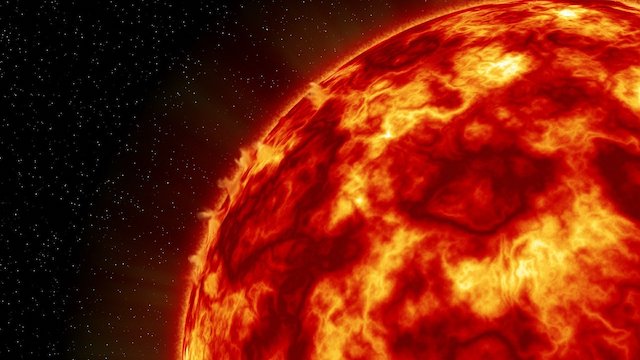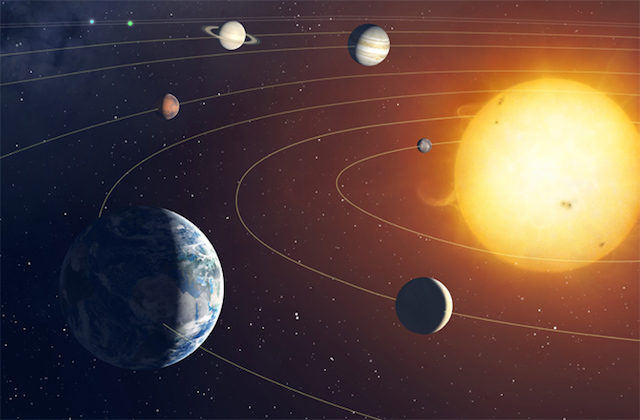Fossil fuel is a dying industry in the throes of its zombie phase, simply refusing to stay in the ground.The world needs alternative energy sources that are viable and powerful. We have solar cells, wind power and other renewables now, but we’re really not using them to their full potential. The future has many possibilities for untapped and improved energy sources that could change the face of the world.
10. Fusion
The world has been waiting for fusion power for decades. It’s what keeps the sun working, so we know it’s pretty reliable. The problem is harnessing it for practical purposes. While fission has proven successful if extremely wasteful and potentially dangerous, fusion would be a far superior energy source. The energy produced is more abundant and produces less waste.
The idea of fusion has been rumbling around for a long time. Experiments began in the 1940s and have continued to the present. And it’s not that we can’t create a fusion reaction, it’s just that we can’t create a good one. It takes a lot of power to start a fusion reaction and so far, it takes more power than we can get out of it.
Predictions for sustainable and reliable fusion power have been all over the map. But many suggest we may have the real deal sometime around the 2030s or 2040s.
Fuel for fusion reactions is a simple hydrogen isotope which is easily found and plentiful. Unlike fission and its radioactive nuclear waste, fusion makes helium. So we’d have endless power plus endless party balloons.
Magnetic confinement of the plasma is technologically feasible, it’s just a matter of working out the engineering kinks in making a reaction work. The end result is a power source four million times as effective as fossil fuels.
9. Algae Power

An unlikely but very interesting fuel source out in the world is algae. The green scum that grows in ponds and fish tanks holds remarkable potential for creating biofuel and more. While photovoltaic cells are able to produce power from the light of the sun, a bio-photovoltaic cell creates power the same way plants do. Photosynthesis occurs in the cells, allowing them to convert sunlight to electricity. All that’s needed is the plant cells to allow it to happen, which can be easily grown in the form of algae.
Algae produce and shed electrons when exposed to sunlight as photosynthesis occurs. These electrons can be used as viable electricity right away when they form on the bio-photovoltaic cells. It’s like a perfect, self-contained little battery. The energy efficiency is not as good as solar, but they could be very useful in rural areas and underdeveloped countries that don’t have access to modern power grids.
Alabama was the first state in the US to set up an algae biofuel facility that proved to be a carbon-negative endeavor. The plant treats local wastewater with algae. The wastewater feeds the algae and the waste material is actually clean water that can be released into nature again because the algae fed on all the stuff that normally needs to be cleaned out.
The algae itself can then be processed into biofuel and the process continues. So unlike most energy sources, not only does this produce a reliable, clean fuel it also helps clean up the environment for a one-two punch of eco-friendly work.
8. Human Energy

Who would have guessed the machines in The Matrix were on to something? You can actually use a human as an energy source. And lucky for us, no one needs to be held in an artificial reality world.
All day long, humans are wasting energy, much of which we can harvest and reuse if we want to. We’re constantly wasting kinetic energy and giving off heat and it could all be used more productively.
In 2008, researchers developed a knee brace capable of converting kinetic energy into power for personal electronics. Essentially, it would allow you to charge your phone by walking around.
Wearable and implantable technology could rely on traditional battery technology. But in the future, if those items could be powered by kinetic energy, or body heat, or the electrical charge produced by a human body, then it’d make things much easier and less costly to keep running.
7. Flying Wind
Up until recently, wind power seemed very self-explanatory. Windmills have been around since Don Quixote first had problems with them, and today they’re used for power generation around the world. But wind power currently accounts for only 8.4% of all US power. That actually makes it the greatest renewable energy source in America, overshadowing things like solar. It can do better, though. A lot better, in fact.
Wind is a resource that is always around. Even the sun can’t compete with the ever present state of wind. The problem is with ground-based windmills. As you know, the wind isn’t always blowing, not down on the ground. But if you go far enough up in the air? You get stronger and more consistent wind and that’s where flying wind turbines come in.
Flying wind turbines are built like kites. They can be set up to two altitudes of around 1600 feet where wind is much more powerful. Some flying turbines can generate twice the power of tower-mounted turbines. A company called Altaeros has developed massive, blimp-style turbines and has deployed one in rural Alaska to help provide power to communities that are remote and often have unreliable power coverage. The self-sustaining turbine is tethered to the ground and filled with helium.
6. Offshore Wind
The great thing about wind is that you can find it just about everywhere outside. The more open space you have, the easier it is to harness. And out on the water provides one of the best places to find wind that is never going to be blocked by buildings or trees. Offshore wind farms present a great opportunity to take advantage of a renewable energy source.
Offshore wind has the potential to generate 120,000 gigawatts of power. That works out to 11 times the predicted global demand for electricity in 2040. In other words, offshore wind could power the world and then some.
Offshore turbines generate about three times as much power as ones built on shore. And people are less likely to be annoyed by them because they don’t have to look at them. The big drawback now is how wind farms would affect the fishing industry. The industry is worried about construction driving fish away and also making it harder to fish and navigate with turbines in the way. If those logistics can be worked out, the potential benefits are clear.
5. Nuclear Recycling
Nuclear power has been around since 1951 when the EBR-1 became the first operational power plant producing electricity. It has existed with some controversy for a solid 70 years. It produces abundant power, but when things go wrong, they go really wrong. Just ask the people who no longer live near Chernobyl and Fukushima. But more than just the occasional disaster, nuclear has problems when it runs exactly the way it’s supposed to. Namely, waste. Nuclear fission produces incredibly dangerous nuclear waste.
Most waste that can’t be used in some way is sealed in containers to be transported to storage sites where it will sit for just short of eternity. Hollowed out mountains or mines of salt rock, clay or granite are often tapped as tombs in which waste can be stored. These things are designed to literally hold waste for one million years. Much waste remains radioactive for somewhere between 1,000 and 10,000 years. And sure, every industry can produce dangerous waste, but nuclear waste actually still has potential. Because it’s radioactive, it means it’s still producing energy. That can be harnessed.
Nuclear recycling looks to take the waste from one reactor and just use it in another one. Nuclear reactors are oddly inefficient at extracting power. In fact, nuclear waste has the potential to power the entire US power grid for a century. What’s more, when you keep recycling waste to extract power, the final waste that can no longer be recycled is much more drained of radiation. It will decay to a harmless state in hundreds of years instead of thousands.
4. Geothermal
Only 0.4% of all energy in the US comes from geothermal sources. It’s literally the lowest run on the renewable energy totem pole. Its lack of prominence mostly stems from engineering problems. Like fusion, getting geothermal to be viable has historically not been worth it. If it takes more time, effort and money to get the power out of it, it’s not worth it. Luckily, technology keeps moving forward and geothermal is poised to become much more viable.
Geothermal is meant to harvest both heat and electricity from the Earth. The Earth’s core produces about as much heat as the sun, so there’s a lot of potential there. Of course, it’s 4,000 miles underground, so tapping that does have logistical issues. Because the heat is generated by radioactive decay, it’s expected to keep producing this heat for a few billion years. In terms of practical power, it’s estimated that 0.1% of the heat in the Earth could supply the world’s energy needs for about 2 million years.
Unlike other renewables, geothermal is arguably the most constant and reliable. Wind and sun can change and are subject to weather patterns. The Earth’s core is always hot, the energy is always there. It’s just a matter of developing the technology and mastering the engineering to make it viable, which is slowly rolling out already.
3. Tidal Energy

Offshore wind is not the only way we can make the most of the waters, as tidal power is also showing potential. There’s about one terawatt of energy potential in the tides. The entire world uses about 17 terawatts per year, so one terawatt represents a good chunk of our global needs.
Several wave farms have been attempted in Europe, including in Portugal, France and elsewhere. They have proven the concept, but they haven’t proven to be viable long term yet. Complications in keeping turbines in working order are issues that have derailed past projects. The longest running wave plant is the Mutriku wave plant in Spain that was opened in 2011 and supplies enough power for about 100 houses. Not a ton by any means, but it shows that there is potential there. If the technology can be scaled up in an efficient manner, then it can become a viable addition to local power grids in coastal areas.
2. Solar Fuel

Solar power is something most people understand just upon hearing the term, but solar fuel is another matter. Most of us aren’t familiar with the concept, but it’s distinctly different from solar power. This is not electricity made from the sun’s power, it’s fuel. Liquid or gas fuel, the kind you can burn, developed with the sun’s power.
We touched earlier on algae power, which can be used to make solar fuel, but that isn’t the end of the potential here. The sun can be used to split water atoms to produce hydrogen fuel. It can also be used to develop alcohol fuels like ethanol, and even ammonia.
The current infrastructure for chemical fuels can easily support solar fuels. It’s just a matter of developing the technology to the point of being worthwhile, something which has only had minimal effort put into it so far. However, now that algae power is proving its worth, the potential for other forms of solar fuel production will probably become more enticing.
1. Space Based Solar Power

Even though solar only accounts for 2.3% of total power in the US, it’s still the buzzword in renewable energy. The truth is, the sun produces enough power for us to meet all of our energy needs several times over if we could adequately harvest it all. One hour of the sun hitting the earth produces all the energy the planet typically uses in a full year. Harvesting all of that will never happen, but we can definitely do better than we do today. Better coverage with more efficient energy collecting methods.
The solution may be leaving the Earth behind. After all, the sun is only available to us on the ground when it’s daytime and weather permits. Once you leave the atmosphere, it’s all sun all the time if you’re facing the right direction.
In 2022 or 2023, CalTech is planning on launching an array into space specifically to harvest solar power. Compact and lightweight solar cells are now technologically feasible. Creating an orbital platform doesn’t need to cost billions and take up a massive space in the sky.
Thanks to the commercial world joining the space race, technology is more widely available and cheaper to use than it was in the past. Building a relatively low cost array that can beam power down to earth via microwaves may only be a few years away.